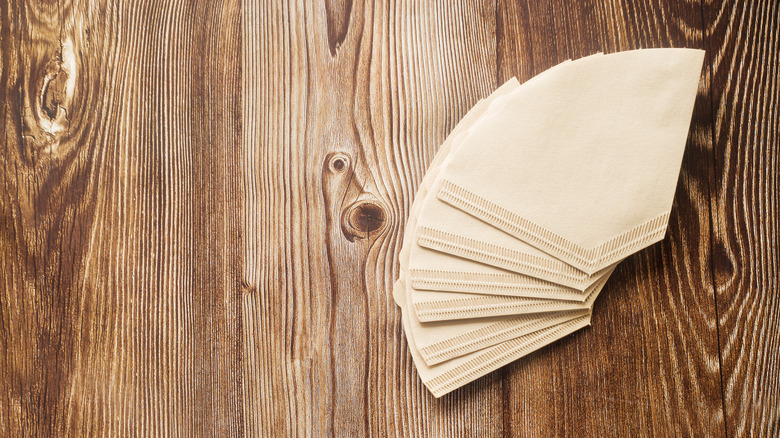The Easy Way To Strain Homemade Broth Without A Cheesecloth
Cheesecloth is so easy to forget. You can have a pack in the back of a cabinet for a hundred years and never have to replace it. Until you do. But cheesecloth just isn't typically an everyday item in most home kitchens. Unlike, say, paper towels or coffee filters, which many folks burn through quickly enough to have on auto-replenish, the gauzy cotton fabric commonly used for straining can be an afterthought. But when the "haven't heard that word in years" meme becomes a reality, you can actually swap cheesecloth for that aforementioned more common kitchen supply: the coffee filter.
Now, while a coffee filter is not going to be as effective as a cheesecloth at something like its titular application, cheesemaking, you can repurpose it to milk-wash dairy for cocktails, filter bacon fat in a pinch, and, of course, strain the tiniest of all particles out when making a stock. Just remember that a coffee filter will be less sturdy than a cheesecloth and proceed accordingly.
How to use a coffee filter in place of cheesecloth
If you happen to have a Chemex pour-over coffee maker, it and its dedicated filters are an ideal cheesecloth dupe. For one, the whole setup is already constructed more or less for this very purpose without any extra architectural blueprints on your part. Simply pop the filter in as though you were going to make coffee and strain away. But, about that relative material vulnerability, pour slowly. In the case of that stock, were you using cheesecloth, you might be cavalier enough to dump the whole pot over the textile. Because, again, the coffee filter, while a suitable swap, is more fragile, you'll want to pour your stock more slowly and avoid introducing a lot of those heavier, solid ingredients. A big fork should help you keep them at bay.
Absent a Chemex, you can still pull off this switcheroo, just with a little more back-of-the-envelope ingenuity. You can push a standard coffee filter most of the way through the top of a Mason jar, flip its edge down, and secure it with a rubber band to use as an ad hoc filtration device. This process can be repeated with a coffee cup if you're handling loose tea or a wine glass (sans rubber band) to eliminate any errant bits of cork after opening a wine bottle without a dedicated corkscrew.

